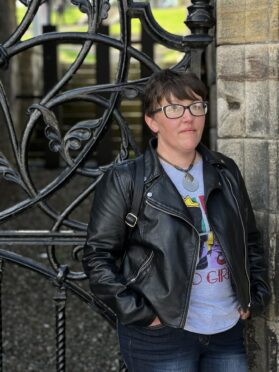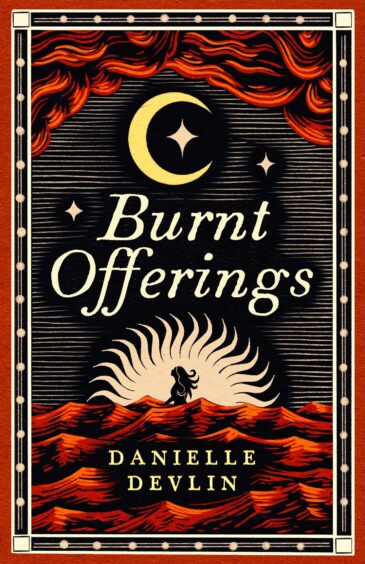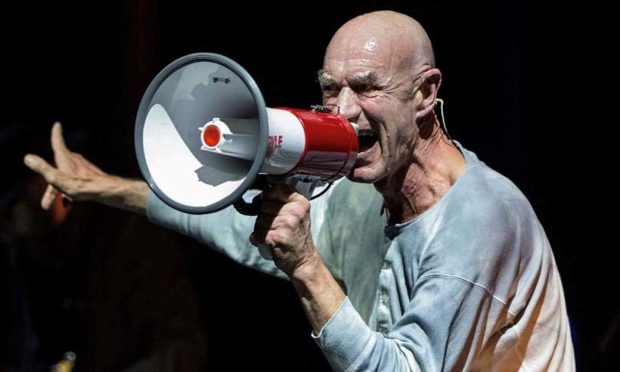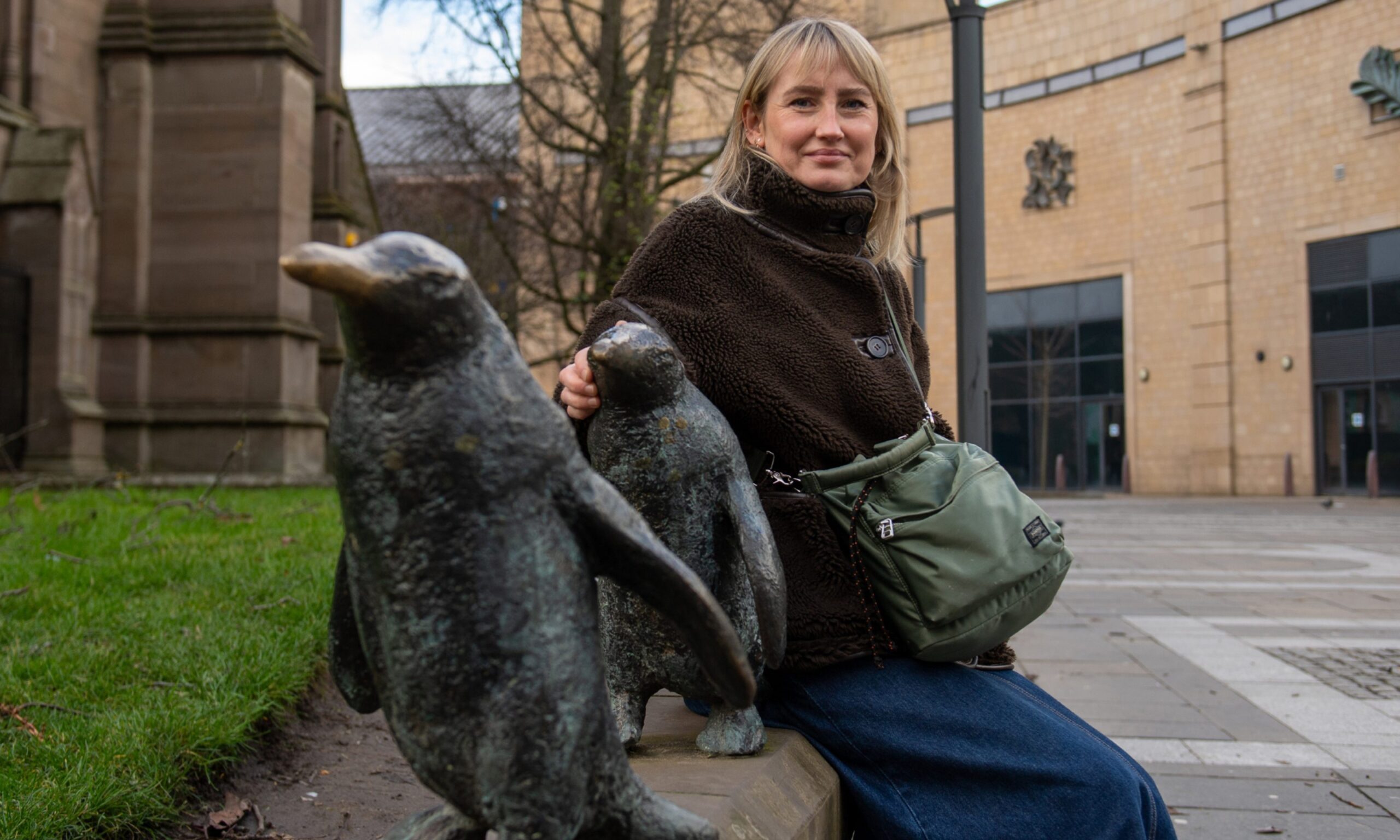In her powerful first novel, Danielle Devlin turns back time to the turbulent and terrifying tale of a young woman caught up in the sixteenth century North Berwick Witch Trails.
It seems that Danielle Devlin was always destined to be a writer. The author grew up in the North of England where she was, “surrounded by stories from my dad working on tugboats on the Tyne, or stories from my mam of her eccentric aunt. As an only child, it probably all helped fuel my already fertile imagination.”
She has fond memories of the stories her gran used to tell, “as my dad put it she ‘would never let the truth get in the way of a good story’,” she laughs. “I used to listen to her in awe. Storytelling seemed to run in the family and then my mam cemented that by taking me every Wednesday to Gateshead Library.
Precious time spent in the library
“I’d sit in the children’s corner in silence and read with reckless abandon – every book on the shelves. In there, I could be anyone or anything, which drew me to writing.”
On a school trip to Gateshead Art Gallery, the young Danielle learned to make and bind books. “From that point on, I’d just write my own stories and bind them myself, albeit badly and thrust them on to anyone I could get to read them.”
Burnt Offerings
Fast forward to adulthood and the young storyteller progressed to an Open University degree in English literature and creative writing, “which is where I started Burnt Offerings. From there, in 2021, I entered it into The Future Bookshelf, which is a competition run by Hachette for underrepresented writers and I was one of eight winners.
“Meanwhile, there had been a Tweet pitch on Twitter which I’d also entered and the manuscript was requested by my now publishers, Polygon and the rest, as they say, is history!”
So what drew her to writing about a subject as steeped in history as the North Berwick Witch Trials? “I’ve always had a deep fascination with witch trails,” says Danielle, “but for me, the North Berwick Witch Trials were what set everything aflame, they were the start of King James’ obsession with witches and their eradication.
“At the time I started writing it felt like these hadn’t been explored, we’d heard about Pendle and of course Salem, but these were where it started.”
Burnt Offerings is the story of Besse Craw, a woman whose husband has vanished. The young mother is accused of witchcraft and seems powerless in the face of abuse from her employer and destined to lose her daughter, her freedom and ultimately her life.
Giving women a voice
Told from Besse’s perspective, Burnt Offerings gives a different insight into the terrors of the witch trials. Women had no voice and often no recourse if they were accused of witchcraft and Danielle was determined to give her character that platform and to draw her readers into that world – no matter how far removed from our lives it seems.
“As authors we try to transport the reader to these places,” she points out, “to immerse them in the sights and smells and blood fever of what these trials were like. Women, whose guilt had already been decided by their peers, passing judgement on the way they lived their lives.
“I think to a degree, we still see witch hunts today, born out of ignorance and intolerance and judgements. Women today still fight the same injustice, to be heard and to be believed – in a world that wants to pick apart their lives and make assumptions before all of the evidence has been heard.”
Becoming absorbed in the past
The author admits that writing the story required, “A whole lot of research!
“And I love absorbing myself in sights and smells and flora and fauna, so a good long walk in the woods with the dogs or listening to songs what would have been around at the time. It gives me a feel for it and allows me to transport myself there, and if I can do that, then I can write from that place.”
Besse’s story was inspired by the real ordeal of a young maid called Geillis Duncan. She was accused of witchcraft by her employer and her confession (obtained under torture) led to the arrests of other women. “Besse became a culmination of all of the women I had read about, the mothers, the daughters, the wives and the friends.” explains Danielle.
Besse became a culmination of all of the women I had read about, the mothers, the daughters, the wives and the friends.”
“These were people whose lives were torn apart by accusation, so for me I wanted Besse to encompass all of those things. So that we, as readers could see our own lives in her.”
In what Danielle wryly describes as a “fun fact”, all of the women’s names in the book are women who were named as accused in the witch trials across Scotland.
Danielle admits that writing a character who lived hundred of years ago can be challenging. “I don’t know if I always got that right,” she says, “because it is very difficult to not view it all through our modern lens. Our views, values and even our legal entitlements as women are very different to what they were then.”
Collective history
She does think that there is merit in revisiting historical events such as the witch trials, especially in terms of how women were viewed and treated, “Collectively, women still fight to be heard and seen and listened to in a patriarchal society. As do other minority groups.
“It is part of our collective history to know about these things, and in part to understand them to try and help us to create a society that does not turn on itself and try to tear others down.”
Danielle Devlin has certainly found her niche in writing historical fiction, in the short term at least. “I’ll be sticking to stories from the past,” she enthuses. “It’s where I feel most comfortable but who knows what the future will hold?
“Writing is like acting for introverts, I never know where I’ll end up next.”
Burnt Offerings by Danielle Devlin is out now, Polygon, £9.99.











